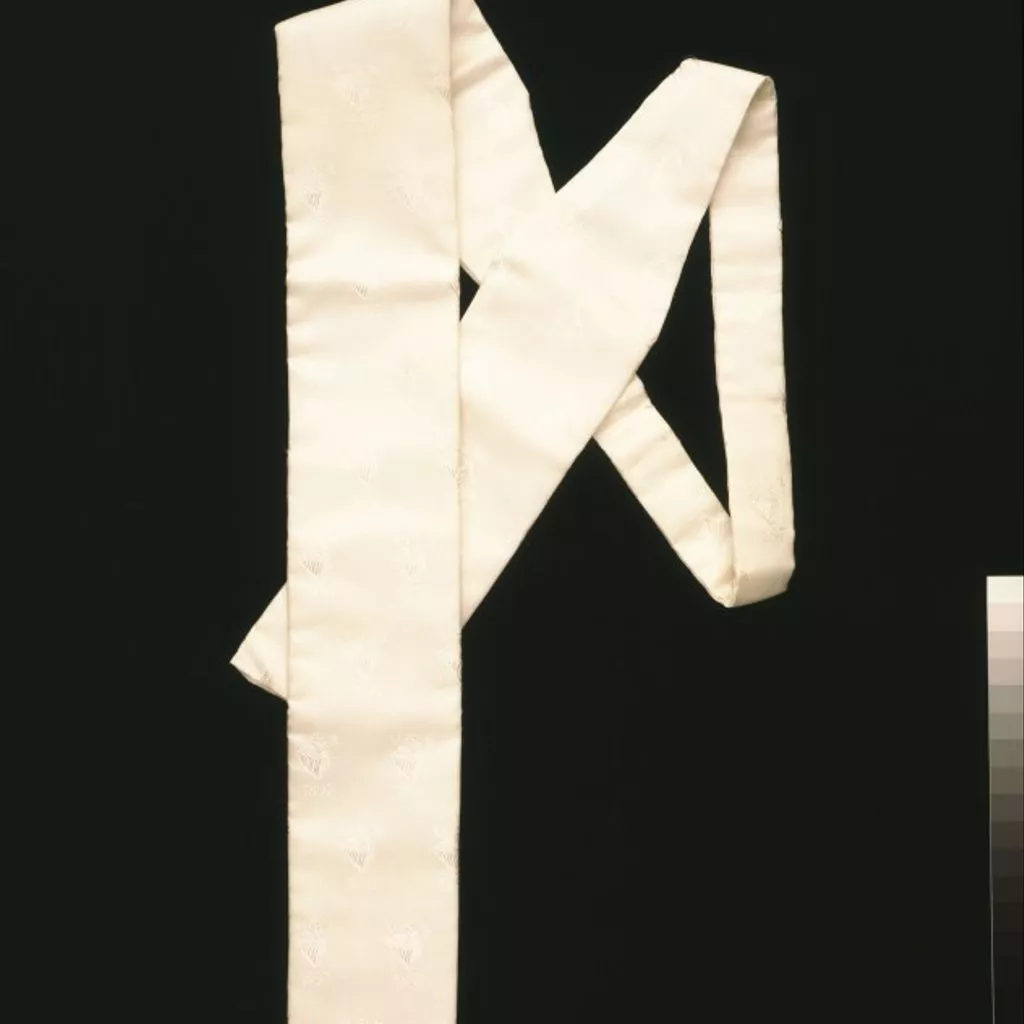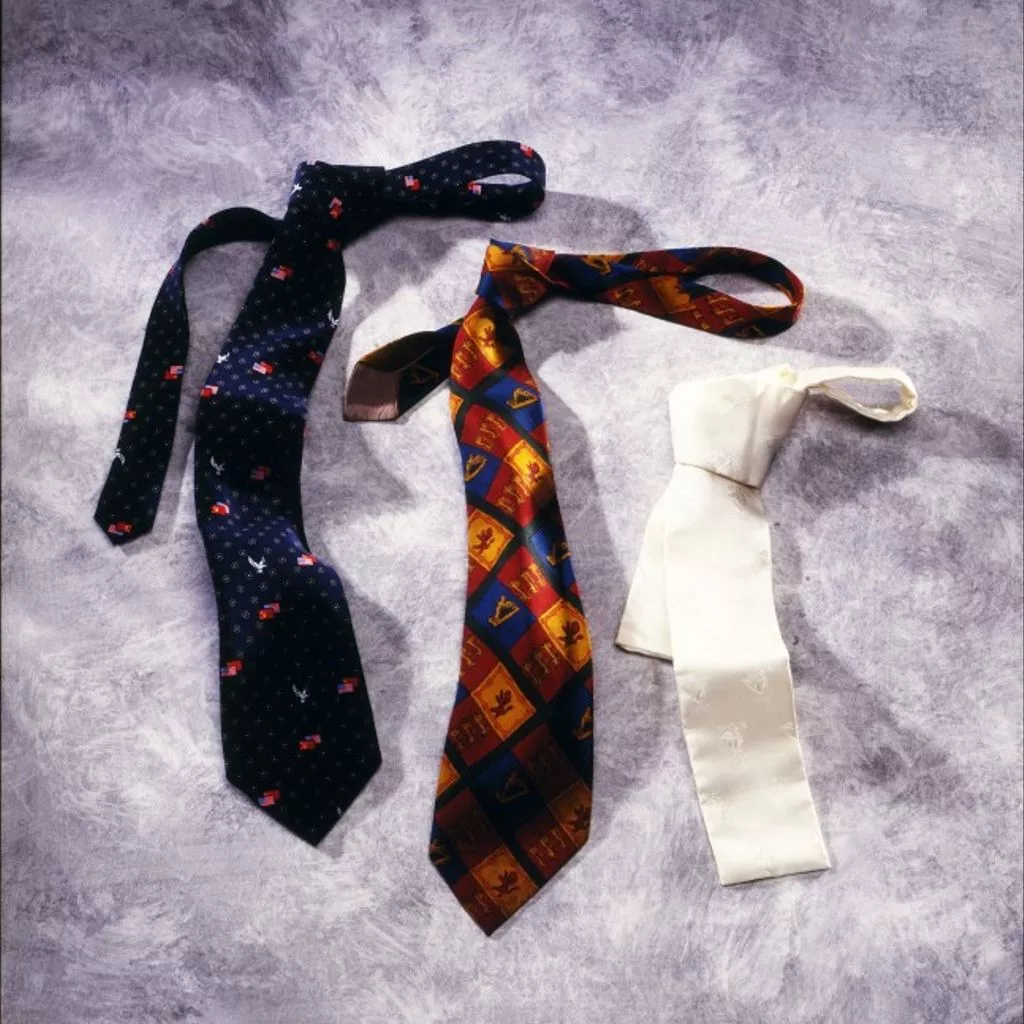1897, Royal Kensington and Chelsea
1897, Royal Kensington and Chelsea
- Identifier
- T.195-1964
- Acquisition
- Given by Dame Kathleen Courtney DBE
- Carried out by
- John Barker & Co., Ltd (http://data.silknow.org/activity/designer)
- Collection
- Technique
- Damask 42%
- Embroidery 99%
- Embroidery 90%
- Embroidery 67%

- Embroidery 100%
- Embroidery 95%
- Depiction
- Geometrical motif 73%

- Geometrical motif 68%

- Geometrical motif 73%
- Dimension
- 114 cm (length)6.4 cm (width)
- Production time
- Production place
- Type of object
Description
Ties came in a variety of colours and styles and were still known as cravats. Some were tied by hand while others were ready-made into knots. Ready-mades had a cardboard stiffener to keep the knot in place. They were fastened around the neck with a buckle, catch or piece of elastic. [27/03/2003] Tie of woven white silk with an over-all pattern of crowned griffons in profile flanked by 'VR' and surmounted by '1897' for Queen Victoria's Golden Jubilee. Slightly padded and is shaped to expand to two long squared off ends, one longer than the other. Stitched inside the neck is a printed label. Object Type
The necktie was an essential part of a Victorian gentleman's dress. The variety of styles and colours must have offered some relief from the dark tones then fashionable for men's suits. In March 1895 the Tailor and Cutter referred to ties and scarves as being the 'saving touch from the monotony of sombreness ... Bows, scarves and ties seem to get more and more varied, and, in the majority of styles prettier and more artistic.'
Design & Designing
The high collars fashionable in the late 19th century often made it difficult to keep the neckband of the tie in place. The invention of tie clips and frames helped to solve this problem.
Time
During second half of the 19th century four distinct styles of necktie evolved. They were given a great many different names, which can be confusing. The main categories were: (i) bow tie; (ii) scarf or neckerchief; (iii) Ascot; and (iv) four-in-hand, or sailor's knot, generally referred to as the 'long tie'. Silk tie, John Barker & Co., Ltd., Kensington and Chelsea, 1897




